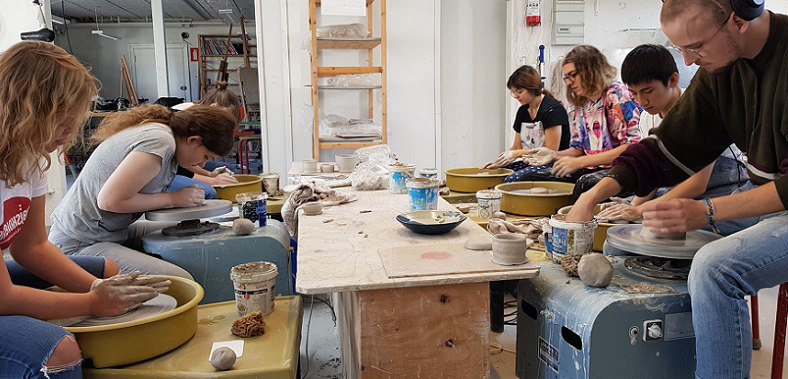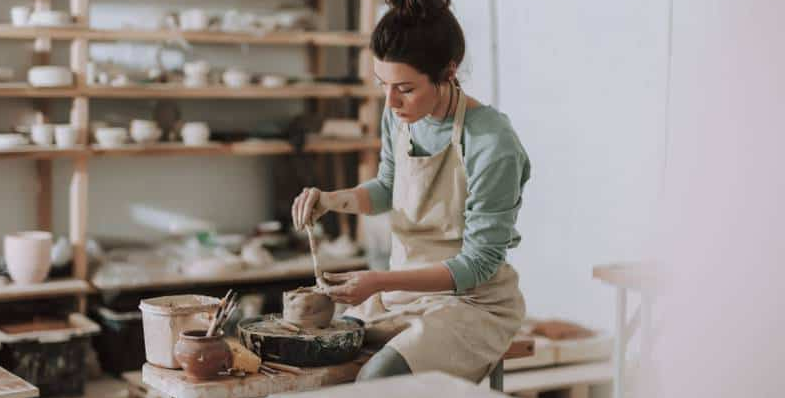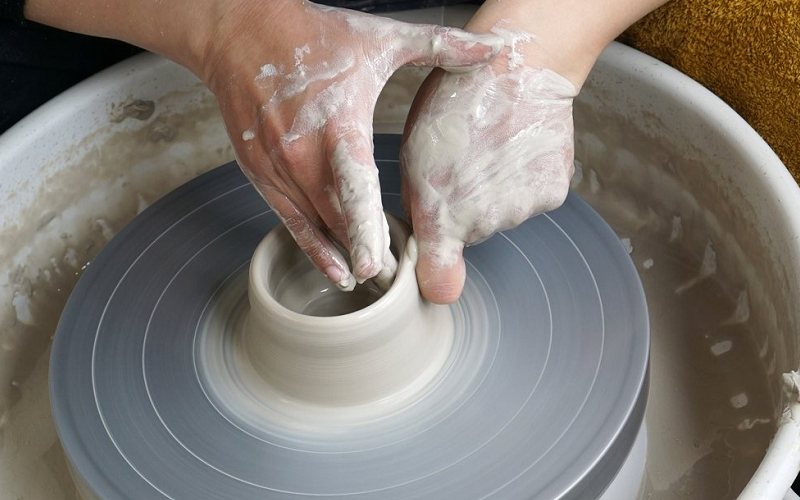Are you interested in exploring your creative side and trying out a new hobby? Pottery might be just the thing for you! Not only is it a fun and relaxing activity, but it’s also a great way to create something tangible with your own two hands. If you’re new to pottery and not sure where to start, don’t worry. Here we share some tips and tricks to help you create your first masterpiece. From choosing the right clay to decorating and glazing, we’ve got you covered. So, roll up your sleeves and let’s get started on your pottery journey!
Introduction to Pottery
Pottery is a form of art that has been around for thousands of years. It involves shaping clay into objects, which are then fired at high temperatures to make them hard and durable. Pottery can be both functional and decorative, and is used for everything from plates and bowls to vases and sculptures.
The process of making pottery involves several stages, including preparing the clay, shaping it into the desired form, and firing it in a kiln. Pottery can be created using a variety of techniques, including hand-building and throwing on a pottery wheel. While it can be a challenging art form to master, pottery is also a rewarding hobby that allows for endless creativity and self-expression.

Getting Started with Making Pottery
Getting started with making pottery involves several important steps. The first step is to gather all the necessary materials, including clay, a pottery wheel (if desired), and basic pottery tools such as a kiln, pottery knife, and ribs.
Choose the right type of clay for your project, as different types of clay have different properties and workability. Once you have your materials, you’ll need to prepare the clay by wedging it to remove air bubbles and create a consistent texture.
From there, you can begin shaping the clay into the desired form using a variety of techniques, such as pinching, coiling, slab building, or throwing on a pottery wheel. As you work, keep the clay moist by spritzing it with water or covering it with a damp cloth to prevent it from drying out too quickly.
Once your piece is complete, it will need to be fired in a kiln to make it hard and durable. This process can take several hours, depending on the size and thickness of the piece. You can decorate and glaze your piece to add color and texture, and then fire it again to set the glaze.
Basic Techniques of Making Pottery
Making pottery involves several basic techniques that are used to shape clay into a desired form. These techniques include wedging, pinching, coiling, slab building, and throwing. Wedging involves kneading the clay to remove air bubbles and create a consistent texture.
Pinching involves using your fingers to pinch and shape the clay into a form. Coiling involves rolling long, thin pieces of clay and joining them together to create a form. Slab building involves rolling out flat sheets of clay and cutting and joining them together to create a form.
Throwing is the technique used on a pottery wheel to shape the clay into a form using a combination of hand and foot movements. Each of these techniques requires different levels of skill and can be used to create a wide range of forms, from functional objects like plates and bowls to sculptural pieces.
Master these basic techniques before moving on to more advanced techniques, as they form the foundation for all pottery making.

Pottery Making Tools and Equipment
Making pottery requires a variety of tools and equipment. The basic tools required include a pottery knife, ribs, a rolling pin, a wire tool, and a sponge. These tools are used to shape, smooth, and texture the clay.
Advanced tools include a pottery wheel, which is used for throwing, and a kiln, which is used to fire the clay. A pottery wheel comes in different types, such as electric or kick-wheel, and is used to spin the clay while the potter shapes it with their hands. A kiln is used to heat the clay to high temperatures, causing it to harden and become durable.
Pottery glazes are also required, which are liquid coatings that are applied to the pottery to add color and texture. Safety equipment, such as a respirator mask and goggles, should also be used when working with clay and glazes.
Choose high-quality tools and equipment that are suitable for your skill level and the type of pottery you want to create.

Decorating and Glazing Pottery
Decorating and glazing pottery is the final step in the pottery making process. Pottery can be decorated using a variety of techniques, including carving, stamping, and painting. Carving involves cutting designs into the clay with a pottery knife or carving tool.
Stamping involves pressing designs into the clay using a stamp or other object. Painting involves applying colored glazes or underglazes to the surface of the pottery using a brush or other applicator. Once the pottery is decorated, it’s time to apply glaze. Glaze is a liquid coating that is applied to the pottery to add color and texture.
Glaze can be applied using a brush, spray gun, or by dipping the pottery into the glaze. Once the glaze has been applied, the pottery is fired in a kiln to set the glaze and make it hard and durable. Choose the right type of glaze for your pottery, as different glazes have different properties and effects.
Glaze can add a glossy, matte, or textured finish to the pottery, and can also affect the color of the pottery depending on the type of clay and firing temperature used.
Common Pottery Making Mistakes to Avoid
Pottery making can be a challenging art form, and it’s common for beginners to make mistakes. One of the most common mistakes is overworking the clay, which can cause it to become too dry and difficult to shape. Keep the clay moist and pliable by spritzing it with water or covering it with a damp cloth.
Another common mistake is inconsistency in thickness, which can cause the pottery to crack or break during firing. Ensure that the walls of the pottery are uniform in thickness, and to avoid leaving air pockets in the clay. Poor centering is another common mistake, especially when using a pottery wheel.
Take the time to center the clay properly before shaping it, as this will ensure that the final piece is symmetrical and balanced. Other common mistakes include not smoothing the clay properly, not trimming the pottery after shaping, and using too much glaze or applying it unevenly.
By being aware of these common mistakes and taking the time to practice and refine your techniques, you can avoid these pitfalls and create beautiful and functional pottery.
Pottery Making Tips and Tricks
Pottery making can be a challenging but rewarding art form, and there are several tips and tricks that can help beginners create successful pieces. The first tip is to practice, practice, practice. Pottery making is a skill that takes time and dedication to master, and the more you practice, the better you’ll become.
It’s also important to take your time when shaping and trimming the clay, as rushing can lead to mistakes. Don’t be afraid to experiment with different techniques and shapes, as this can help you discover new and interesting forms. When making pottery, learn from your mistakes and not get discouraged by failures.
Every piece is an opportunity to learn and grow as a potter. It’s also helpful to have a mentor or take pottery classes to learn from experienced potters and get feedback on your work. Stay organized and keep your workspace clean and tidy. This will not only make the pottery making process more efficient, but will also help you avoid mistakes caused by clutter and disorganization.

